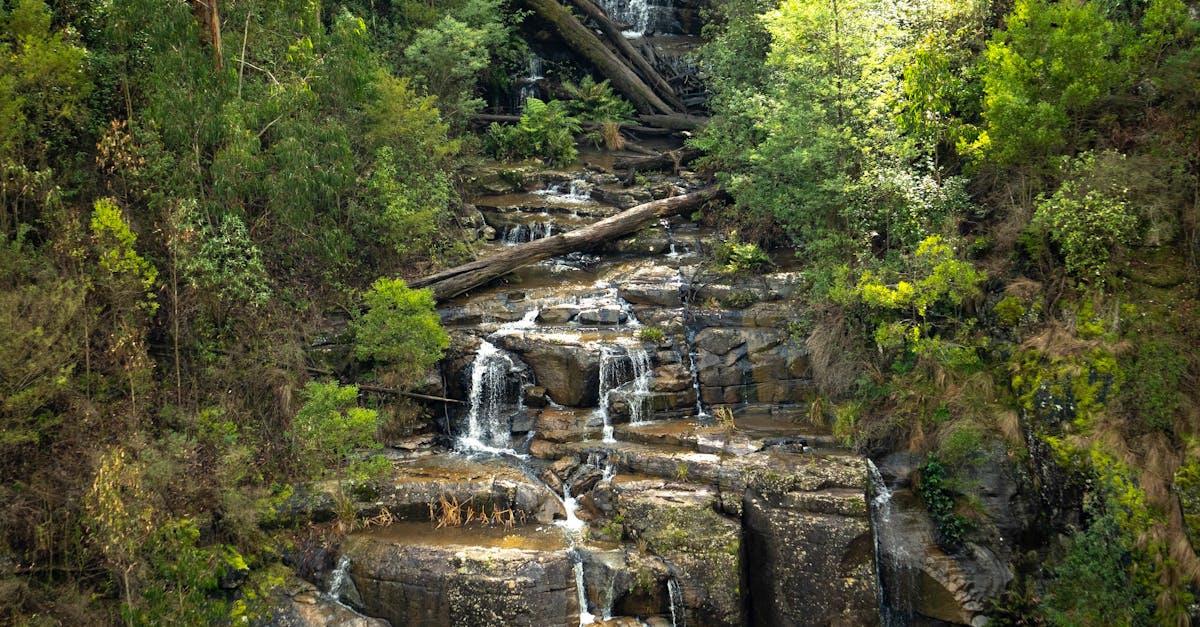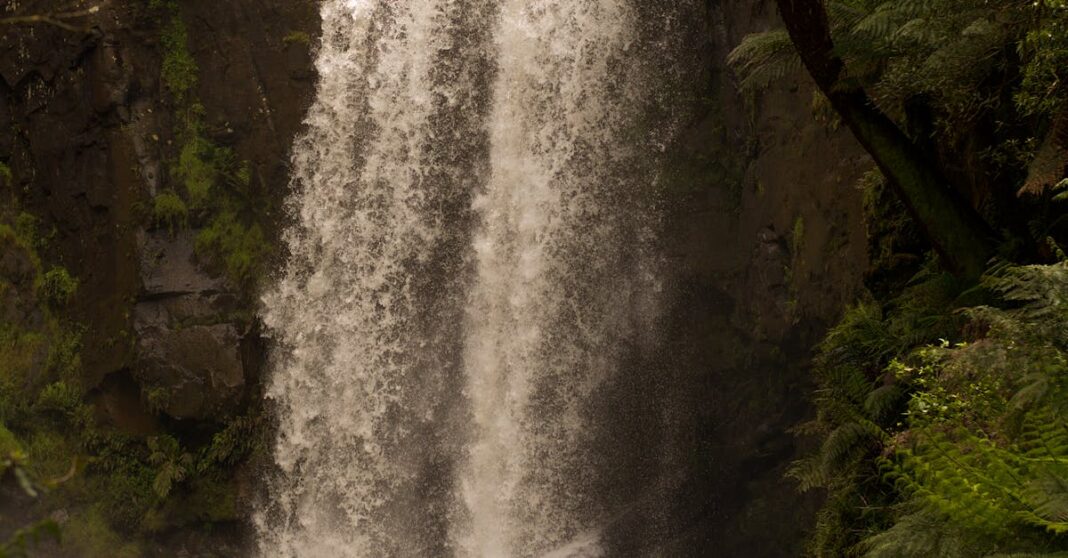Have you ever dreamed of standing in front of a majestic waterfall, feeling the mist on your face and listening to the roar of the water crashing down? If so, then Victoria Falls should definitely be on your bucket list. Located on the border of Zambia and Zimbabwe in Southern Africa, Victoria Falls is one of the most iconic and breathtaking waterfalls in the world. Also known as “The Smoke that Thunders”, it is often referred to as one of the Seven Natural Wonders of the World. In this blog post, we will take a closer look at this magnificent wonder, from its geographical location and formation, to its historical significance, local wildlife and ecosystem, and tourism and activities. We will also explore the impact of human activity on this natural wonder and share some final thoughts on why Victoria Falls is a must-visit destination for any nature lover.
Introduction to Victoria Falls
Victoria Falls is a waterfall of the Zambezi River which forms the border between Zambia and Zimbabwe. The indigenous name for the falls is Mosi-oa-Tunya which means “the smoke that thunders”. This name was given by the locals due to the massive spray of mist that rises from the falls, resembling smoke and creating a deafening sound that can be heard from miles away. This natural wonder was first discovered by David Livingstone, a Scottish explorer, in 1855. He was so impressed by the beauty and power of the falls that he named it after Queen Victoria, the reigning British monarch at the time.
Victoria Falls is over 1,700 meters wide and 108 meters high, making it one of the largest waterfalls in the world. It is divided into five main sections – Devil’s Cataract, Main Falls, Rainbow Falls, Horseshoe Falls, and Eastern Cataract. The Main Falls is the most impressive, with an average flow of over 1.8 million liters of water per second during the peak season. The falls can be viewed from both Zambia and Zimbabwe, with each country offering a different perspective and experience.
Geographic location and formation

Victoria Falls is located on the Zambezi River which flows through six countries in Africa – Angola, Namibia, Botswana, Zambia, Zimbabwe, and Mozambique – before emptying into the Indian Ocean. The falls are situated on the border of Zambia and Zimbabwe, with the majority of the falls falling on the Zimbabwean side. The town of Victoria Falls in Zimbabwe and Livingstone in Zambia serve as the gateway towns to the falls, with multiple accommodation options, restaurants, and activities available for tourists.
The formation of Victoria Falls dates back millions of years ago when the African continent was still part of Gondwana, a supercontinent that existed over 200 million years ago. The Zambezi River started carving its way through the basalt plateau, forming a deep chasm that eventually led to the creation of the falls. Today, the falls continue to erode an average of 2cm per year, creating a zigzagging gorge that stretches for over 100 kilometers.
Historical significance

As mentioned before, Victoria Falls was first discovered by David Livingstone in 1855. However, it has been a significant site for the indigenous Batoka people for centuries. They believed that the falls were inhabited by the god Nyaminyami, who had the body of a snake and the head of a fish. According to their legends, Nyaminyami lived in the Zambezi River with his wife until he was separated from her when the falls were created. This legend is still very much alive amongst the locals, and many believe that Nyaminyami still resides in the river, protecting and providing for them.
During the colonial period, the area surrounding the falls became a popular hunting ground for the European settlers. This resulted in a decline in the population of local wildlife, such as elephants and rhinos. In 1905, the region was declared a national park by the British South Africa Company, and efforts were made to preserve and protect the wildlife and vegetation.
Today, Victoria Falls continues to be an essential site for both Zambia and Zimbabwe, contributing significantly to their economies through tourism and hydroelectric power generation.
Local wildlife and ecosystem
As a designated national park, Victoria Falls is home to a diverse range of flora and fauna. The area surrounding the falls is a tropical rainforest, with over 400 species of plants, including ferns, palms, and vines. The lush vegetation is nourished by the constant spray of mist from the falls, creating a unique microclimate that supports a variety of plant life.
The falls are also home to a large number of animals, including elephants, buffaloes, zebras, giraffes, and various antelope species. These animals can often be seen grazing along the banks of the Zambezi River or drinking from its waters. The river itself is home to numerous species of fish, including the famous tiger fish, which is highly sought after by anglers.
One of the most popular activities at Victoria Falls is the “Flight of Angels”, a helicopter ride over the falls and the surrounding national park. This provides a bird’s eye view of the stunning landscape and the opportunity to spot larger animals such as hippos and crocodiles in the river.
Tourism and activities
Victoria Falls is a major tourist attraction in Southern Africa, attracting thousands of visitors every year. There are multiple ways to experience the falls, each offering a different perspective and level of adventure. Here are some of the most popular activities that you can do at Victoria Falls:
1. Bungee Jumping
For the adrenaline junkies, bungee jumping from the Victoria Falls Bridge is a must-do activity. The bridge stands 111 meters above the Zambezi River, and it offers breathtaking views of the falls and the gorge below. This is one of the highest commercial bungee jumps in the world, providing a once-in-a-lifetime experience for thrill-seekers.
2. White Water Rafting
The Zambezi River is known for its exhilarating rapids, making it a popular destination for white water rafting enthusiasts. The river has different sections for varying levels of difficulty, with some stretches offering Class V rapids that will challenge even the most experienced rafter. This is an excellent opportunity to get up close and personal with the mighty Zambezi River and the surrounding scenery.
3. Devil’s Pool
During the dry season (September to December), when the water levels are low, visitors can take a dip in the Devil’s Pool. This natural rock pool is located at the edge of the falls, providing a thrilling and unique swimming experience. A guide will accompany you to the pool, ensuring your safety as you swim and take in the spectacular views of the falls.
4. Sunset Cruise
For a more relaxed experience, a sunset cruise on the Zambezi River is highly recommended. You can choose between a larger boat or a smaller luxury cruise, both offering fantastic views of the river and its inhabitants. As you sail along the river, you can spot hippos, crocodiles, and various bird species while enjoying a refreshing drink and delicious snacks.
Impact of human activity on Victoria Falls
Although Victoria Falls remains one of the most awe-inspiring natural wonders in the world, it has not been spared from the negative impacts of human activity. The biggest threat to the falls is climate change, which is causing a decrease in the water flow and an increase in the periods of drought. This has a significant impact on the local ecosystem, as well as the tourism industry.
Another major concern is the development of infrastructure and commercial activities around the falls. While these developments bring in much-needed revenue for the local economies, they also pose a threat to the natural environment and the wildlife. The constant flow of tourists can also have a damaging effect on the vegetation and animal habitats, especially during the peak season.
Efforts are being made by the local governments and conservation groups to mitigate these negative impacts and ensure the preservation of Victoria Falls for future generations. It is essential for visitors to be aware of their impact and to practice responsible tourism when visiting this natural wonder.
Conclusion and final thoughts
Victoria Falls truly lives up to its nickname, “The Smoke that Thunders”. Its sheer size, power, and raw beauty make it a must-visit destination for anyone looking to connect with nature. From the misty rainforest to the roaring rapids and the vibrant wildlife, there is no shortage of things to see and do at Victoria Falls. However, it is also crucial to remember the importance of preserving this natural wonder for future generations and to practice responsible tourism when visiting. So, add Victoria Falls to your travel bucket list and prepare to be amazed by the smoke that thunders.

